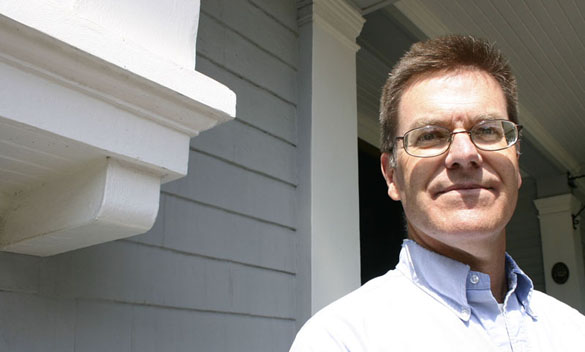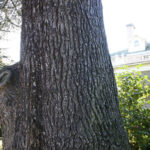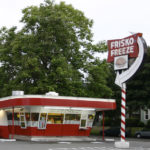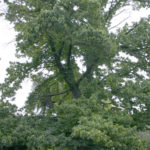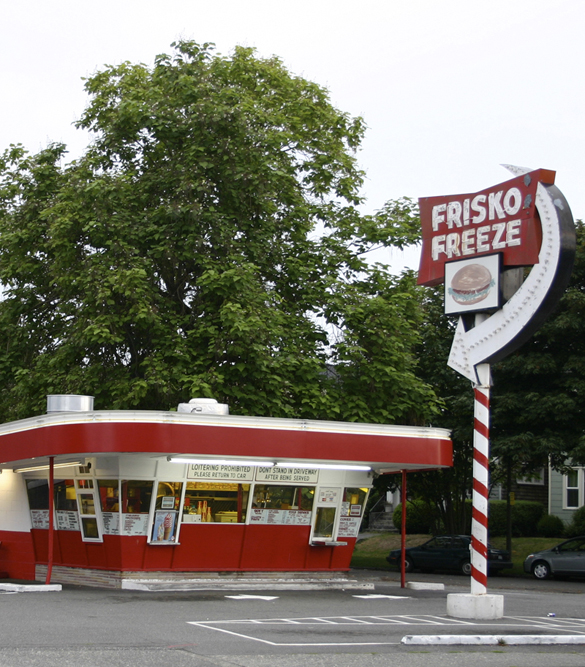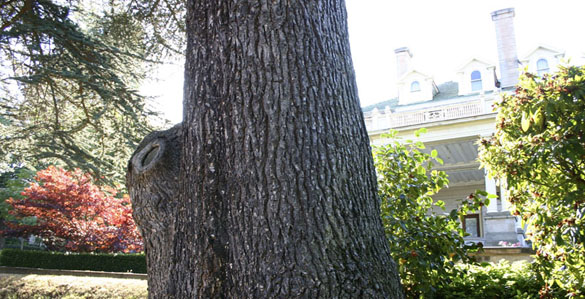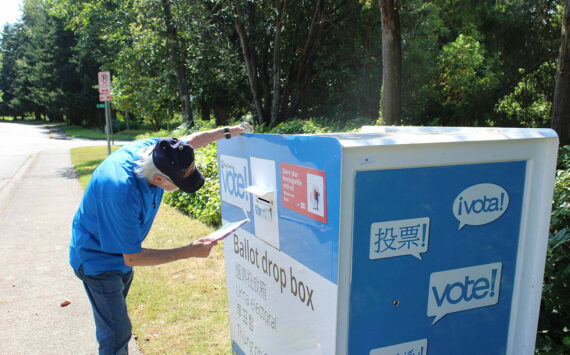It’s a Catalpa tree with broad green leaves that hang over a sidewalk along North L Street near Division Avenue, providing a canopy of shade for anyone who might want to grab a burger and soft drink at Frisko Freeze, and shield themselves on a hot summer day.
It’s one of many trees in the area that date back through much of Tacoma’s history.
And like many of the city’s older trees, it sits unprotected from any number of threats: the latest development plan, or someone wanting to chop it down to clear some space or open up a view corridor.
That last facet has spurred a small group to explore the creation of a new historic register to afford some protection to the city’s heritage trees.
By now, most people are familiar with registers for historic buildings.
But historic trees? Isn’t that unusual?
“Not in the tree world,” says City of Tacoma Urban Forester Ramie Pierce, who is working on a comprehensive revision to the city’s street tree ordinance that, when finished, could include a heritage tree register. “It may seem unusual to somebody who is not in the industry. But it’s becoming more and more commonplace. People are appreciating trees a lot more, and they’re more aware of the significance of larger, secure trees.”
Other Pacific Northwest cities have their own heritage tree programs.
The City of Vancouver created its program in 1998, and now lists 19 trees on its register — including an apple tree dating back to 1826. Trees added to Vancouver’s register must be in good condition and have the consent of the property owner. Nominations are reviewed twice per year.
The City of Seattle created a heritage tree program in 1996. Today, its register includes 59 trees.
Tacoma, however, doesn’t have such a register.
“It seems like [Tacoma] is old enough now,” comments Pierce. “Why don’t we have this? Other people have requested a similar program, so I know there is interest.”
When Pierce arrived at City Hall as an intern last spring, she quickly noticed the code was outdated.
“Parts of the ordinance haven’t been updated since 1927,” she says. “Other parts haven’t been updated since 1960 and 1990. Basically, the ordinance is incredibly old and out of date with current urban forestry standards.”
During her internship, she researched the issue, and even wrote a draft version of a revised ordinance that touched on all aspects of the code — not just heritage trees. When she was hired full-time earlier this month, that work continued full-steam. A committee comprised of residents, landscape architects, tree care companies, realtors, as well as members of the Master Builders Association, Tacoma Public Utilities, the city’s community and economic development department, and code enforcement has met twice to discuss the ordinance revision. She hopes a proposed ordinance revision could be reviewed by City Council as early as January.
Still, Pierce adds, it’s too early to know what a heritage tree register would look like.
Would historic tree nominations go through the city’s landmarks preservation commission? Or would there be a separate commission to review nominations? And what would happen to trees that died naturally? Would they be de-listed?
“It’s too early in the process,” she says, adding that she has looked at programs in Seattle, Vancouver, Olympia, and Portland as models.
Tacoma historic preservation officer Reuben McKnight agrees it’s too early to know how the program would function.
“I think we’re just at a real preliminary stage,” he says.
What role would the landmarks commission have in creating and maintaining a heritage tree register?
“I don’t know yet,” he says. “We would probably advise on development of a program. If there was any management of it, we would have to figure it out. It’s very specialized. It depends on what would go with it. Sometimes the designation is completely honorary. It’s sort of a different animal. You can’t manage trees like you manage historic buildings. We probably would have to look at practices of other organizations and cities. Maybe it’s something that comes out of Ramie’s office. It may or may not affect any future action involving a tree. It may be a pure recognition piece. All those things are possible. The landmarks commission could potentially be a reviewing body. But we don’t have an arborist [on the commission]. Ramie is the City’s expert.”
Recognizing and preserving Tacoma’s old trees is something McKnight says would benefit Tacoma.
“The fact of the matter is that Tacoma has some very spectacular examples of heritage trees,” he adds. “We have many Champion Trees, especially in Wright Park. It’s something that, in the past, I’ve been surprised hasn’t come up before.”
One person who would like to see a register of historic trees is North Slope Historic District resident and preservation activist Marshall McClintock. He has spent hours in the Northwest Room at the Tacoma Public Library searching through archives that document the city’s street beautification projects. He’s also consulted “Champion Trees of Washington State” by Robert Van Pelt to learn more about heritage trees.
McClintock has identified three trees in and around the North Slope that could be added to the register if it’s created: A Cedar of Lebanon tree located near the historic Rust Mansion on North I Street. McClintock estimates it was part of the mansion’s original landscaping, and could date back as far as 1905-1910; a large Spanish Chestnut tree located on a parking strip near North Sheridan Avenue and North Fifth Street. McClintock estimates it was planted between 1890 and 1910 as part of a street beautification project; and the Catalpa tree located near Frisko Freeze. This, too, dates back between 1890 and 1910, according to McClintock.
“These trees are ones that are recognized and people sort of consider them to be iconic,” says McClintock. “People know, ‘Oh, the big Chestnut tree.’ They are aware of it. In fact, I think they would probably want to register more of them. I get a number of calls from people who are upset when large trees are taken down.”
One concern for McClintock is that many of Tacoma’s older trees are located on parking strips between sidewalks and streets — an “ambiguous” area owned by the city, but maintained by individual property owners.
He thinks heritage designations for trees could provide protection in these areas.
“I would like to make sure [these trees] are protected, and they remain as long as they are viable trees,” says McClintock. “Trees, obviously, are living things. They’re not like buildings. They do have a life cycle and they do eventually die. What I would like to avoid is a situation where the city, or a homeowner, basically decides, ‘Oh, we’re just going to get rid of that [tree].'”
Todd Matthews is editor of the Tacoma Daily Index and recipient of an award for Outstanding Achievement in Media from the Washington State Department of Archaeology and Historic Preservation for his work covering historic preservation in Tacoma and Pierce County. He has earned four awards from the Society of Professional Journalists, including third-place honors for his feature article about the University of Washington’s Innocence Project; first-place honors for his feature article about Seattle’s bike messengers; third-place honors for his feature interview with Prison Legal News founder Paul Wright; and second-place honors for his feature article about whistle-blowers in Washington State. His work has also appeared in All About Jazz, City Arts Tacoma, Earshot Jazz, Homeland Security Today, Jazz Steps, Journal of the San Juans, Lynnwood-Mountlake Terrace Enterprise, Prison Legal News, Rain Taxi, Real Change, Seattle Business Monthly, Seattle magazine, Tablet, Washington CEO, Washington Law & Politics, and Washington Free Press. He is a graduate of the University of Washington and holds a bachelor’s degree in communications. His journalism is collected online at wahmee.com.
